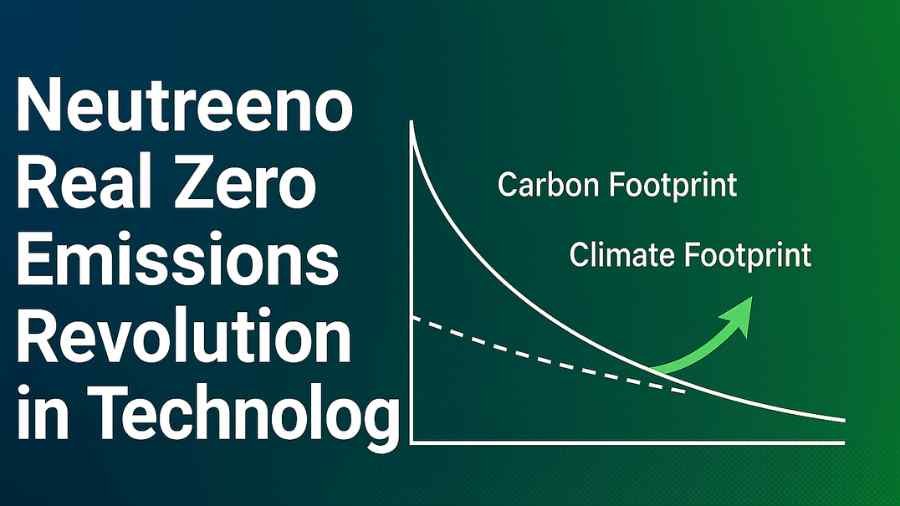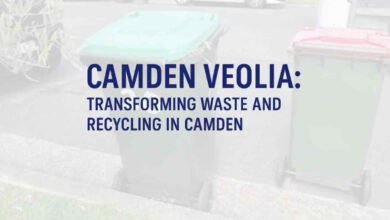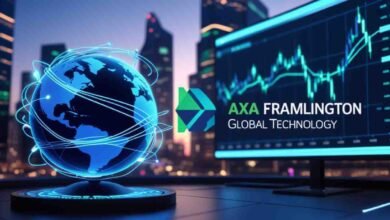Neutreeno: Pioneering the Path to Real Zero Emissions

In the urgent race to address climate change and industrial pollution, technological innovation must lead the charge. Neutreeno emerges at the intersection of engineering, data science and sustainability, offering a transformative approach to decarbonisation. Unlike many platforms that merely track emissions or rely heavily on offsets, Neutreeno’s ambition is bold: to drive Real Zero reductions by redesigning industrial and supply chain systems at their core.
The Philosophy Behind Neutreeno
The name “Neutreeno” implies neutrality, but its mission reaches far beyond neutrality. The company’s core philosophy is that true sustainability demands eliminating emissions, not just balancing them. In other words, achieving Real Zero rather than simply settling for Net Zero.
Many businesses today aim for Net Zero by combining reductions with carbon offsets. While this has merit, it often fails to address root causes. Neutreeno believes the next phase of climate action must emphasise redesigning processes, materials, and supply chains to prevent emissions from occurring in the first place. This is not mere green rhetoric — it is a systems engineering challenge which the founders, with backgrounds in science and process modelling, are equipped to tackle.
Technology and Modelling: The Engine of Change
At the heart of Neutreeno is a sophisticated modelling engine, built around process network modelling. The engine maps material and energy flows across an organisation’s operations and supply chain, tracing how raw inputs transform into finished goods and where emissions arise in the chain.
The process network model identifies inefficiencies, energy losses, redundant steps, and high-carbon materials. It then runs scenarios to evaluate alternative designs or sourcing strategies that maintain performance while lowering emissions. For example, the model may suggest substituting materials, altering reaction pathways, reusing waste heat, or rerouting supply flows.
Machine learning strengthens that modelling. As more data is gathered over time — real performance metrics, operational logs, supplier information — the system refines its predictions and recommendations. Each client essentially contributes to a virtuous learning loop, where insights deepen and adaptation becomes more precise.
Neutreeno combines this core modelling with a user interface tailored for decision-makers: procurement leads, operations managers, sustainability teams. It delivers clarity: which changes will yield the greatest emissions reduction per unit cost, or which supplier substitutions provide carbon benefit without sacrificing reliability.
Focus on Scope 3 Emissions
One of the most daunting challenges in corporate carbon accounting is Scope 3 emissions — the indirect emissions in a company’s upstream and downstream value chain. For many companies, these account for the majority of their carbon footprint, but they are notoriously hard to measure, manage or influence.
Neutreeno places heavy emphasis on Scope 3. By integrating supplier data, procurement records, logistics networks, and production schedules, its modelling engine builds a clearer view of how emissions cascade through the supply chain. It then enables firms to test “what if” scenarios: What if a supplier substitutes one chemical for another? What if logistics routes are reconfigured? What if materials are recycled or shared between plants?
By providing actionable insight into Scope 3 hotspots, Neutreeno empowers companies to negotiate with suppliers, redesign procurement strategies, or develop new sourcing relationships in a way that aligns cost, reliability and emissions outcomes.
Real-World Application and Case Examples
Although still a rising name in climate tech, Neutreeno has been deployed in pilot projects with industrial clients. In one reported engagement, a customer saw potential for a 35 per cent emissions reduction in just four weeks after pairing existing data with Neutreeno’s modelling recommendations. This rapid potential stems from identifying latent inefficiencies that were previously invisible.
Another client, a manufacturer with complex chemical processes, used Neutreeno to simulate alternative reaction pathways and recover waste streams. The result: material inputs were optimised, waste heat was reused, and a supplier adjustment delivered lower emissions without significant capital expenditure.
In the logistics space, Neutreeno helped a firm reconfigure its transport network, choosing routes and modes that reduced emissions while preserving service levels. In such scenarios, the platform’s strength lies in balancing trade-offs — emissions vs cost, reliability vs risk, and long-term flexibility vs short-term disruption.
These case examples underscore how Neutreeno transitions sustainability from passive reporting to active engineering: the platform doesn’t just tell you where emissions are, it helps you change systems to remove them.
Comparison with Traditional Carbon Accounting Platforms
The prevailing generation of carbon accounting tools is valuable — they help organisations measure emissions, produce sustainability reports, maintain compliance, and demonstrate credentials. However, many stop at measurement: they show dashboards, aggregation of emissions categories, trends over time, and perhaps benchmarking.
What Neutreeno offers is deeper. Its platform is not content merely to log carbon — it models how to cut it out. It connects sustainability to engineering design, to procurement decisions and to process optimisation. It closes the gap between knowing and acting. In doing so, Neutreeno pushes the discipline from carbon accounting into carbon engineering.
This is not to say carbon accounting tools have no place. Rather, Neutreeno complements or extends them, particularly for organisations serious about achieving high-impact, systemic change rather than incremental improvements.
Investment, Growth and Strategic Positioning
In 2024, Neutreeno secured a seed funding round valued at USD 5 million, backed by climate-oriented investors and industrial strategists. This capital is accelerating product development, expanding data science teams, and supporting global expansion.
Its clients span multiple regions and industries: manufacturers, energy firms, logistics companies. By combining sector expertise with modular modelling, Neutreeno positions itself not just as a climate tool, but as a transformational engineering partner.
In a crowded climate technology landscape, its differentiation lies in scientific depth, systems thinking, and a focus on higher order change. Many sustainability startups focus on downstream consumer footprinting or ESG reporting — Neutreeno stakes its claim in the industrial core.
Challenges and Risk Factors
No innovation comes without obstacles. For Neutreeno, a foundational challenge is data quality and availability. Many firms, especially in developing economies or in supply chains with low digital maturity, lack granular, accurate data. Suppliers may resist sharing proprietary information. Measurements may be inconsistent or absent.
Overcoming this demands a combination of clever data estimation methods, strong data governance frameworks, and trust-building with suppliers. In some cases, Neutreeno must start with coarse data and progressively refine it.
Another challenge is integration and execution. Proposing system redesigns is only half the battle — client organisations must implement changes in operations, procurement, engineering, and maintenance. That requires cross-department alignment, capital budgeting, and change management.
There is also market competitiveness. The field of climate tech, ESG platforms and emissions modelling is expanding rapidly. Some players emphasise footprint tracking, others optimise renewable procurement, and yet others promise carbon offsets or nature-based solutions. Neutreeno must sustain its technological edge and clarity of purpose.
Finally, regulatory and policy uncertainty may affect demand. In regions where carbon pricing or emissions regulations are weak, businesses might lack incentive to invest. Neutreeno’s value proposition must therefore appeal not only to compliance but to cost savings, efficiency, risk mitigation and reputation — making the case even where regulation is nascent.
Opportunities and Future Prospects
While challenges exist, the opportunity landscape is vast. Globally, industries are under intensifying pressure from regulators, investors, customers and employees to decarbonise. The appetite for tools that deliver real impact — not just reports — is growing.
Neutreeno’s next moves may include:
- Scenario simulation modules: allowing firms to explore decarbonisation pathways over decades, factoring in technology shifts, market trends and regulation.
- Benchmarking across industries and geographies: giving clients the ability to compare supplier footprints, regional carbon intensities, or sector norms.
- Integration with procurement platforms or ERP systems: allowing real-time sustainability feedback at the sourcing stage.
- Extension into downstream emissions: helping clients in consumer goods or services to model usage, afterlife and disposal emissions as part of a full lifecycle view.
- Advisory partnerships with governments and standard bodies: influencing policy design or validating methods for industrial decarbonisation at national scale.
In time, Neutreeno could help reshape industry norms: making system redesign for zero emissions a standard part of capital planning, not an optional add-on. In such a world, emissions become engineered out — not offset, not glossed over.
The Broader Implications for Climate Action
Neutreeno is not only a tool — it is part of a shift in how society addresses climate change. For decades, carbon offsets, renewable energy credits and afforestation schemes dominated the narrative. While useful, those strategies sometimes risk complacency: “We’ll offset what we can’t eliminate.”
By contrast, Neutreeno’s emphasis on elimination at source elevates ambition. It challenges companies, governments and individuals to rethink how processes and systems operate — whether in energy, materials, logistics, or manufacturing.
If widely adopted, such tools can help industries transition to circular or regenerative models. Waste streams may be repurposed; materials may flow in loops; energy may be reused rather than discarded. Over time, entire supply chains can shift from carbon-intensive linearity toward low-carbon circular systems.
Furthermore, Neutreeno’s models and data may inform policy. Governments seeking to regulate industry emissions or design incentives can base decisions on credible simulation data, not guesswork. Industrial clusters, regional decarbonisation plans, or infrastructure investment programmes can benefit from granular understanding of systemic emissions dynamics.
How Companies Can Get Started
For firms interested in engaging with Neutreeno or adopting a similar engineering-first approach, here are steps to consider:
- Baseline data gathering
Begin collecting as much operational, procurement, supplier and process data as possible. Even imperfect data has value; it provides starting points for modelling. - Pilot projects or targeted units
Select a business unit or site where emissions reduction is urgent or where data is relatively mature. Use this as a proving ground for modelling, iteration and value demonstration. - Cross-functional alignment
Involve operations, procurement, sustainability, engineering and finance teams. System redesign impacts many parts of the business; coordination is essential. - Establish a feedback loop
As recommendations are implemented, monitor results, feed data back into the model, and refine the next round of optimisation. - Engage supply chain partners
Leverage the modelling insights to engage suppliers with options for material substitution, process improvement or emissions reduction collaboration. - Scale gradually
Once value is demonstrated in one area, expand to other sites, product lines, or regions. Use learnings and model refinement to accelerate deployment.
Conclusion
Neutreeno stands at the frontier of climate-tech innovation. By coupling rigorous process modelling with data science and supply chain insights, it shifts the paradigm from carbon accounting to carbon engineering. Its pursuit of Real Zero challenges industries to eliminate emissions at the source rather than relying on offsets or downstream compensation.
While obstacles remain — from data scarcity to change management — the potential is enormous. As companies, regulators and investors demand deeper climate action, tools that deliver measurable reductions will be indispensable. Neutreeno may well help define what it means to lead in sustainability in the decades ahead.



